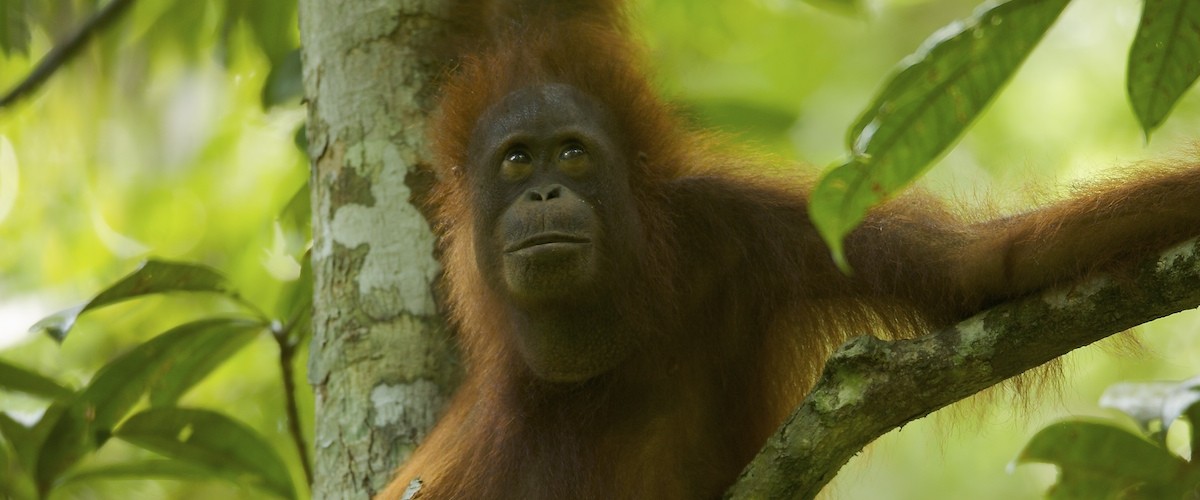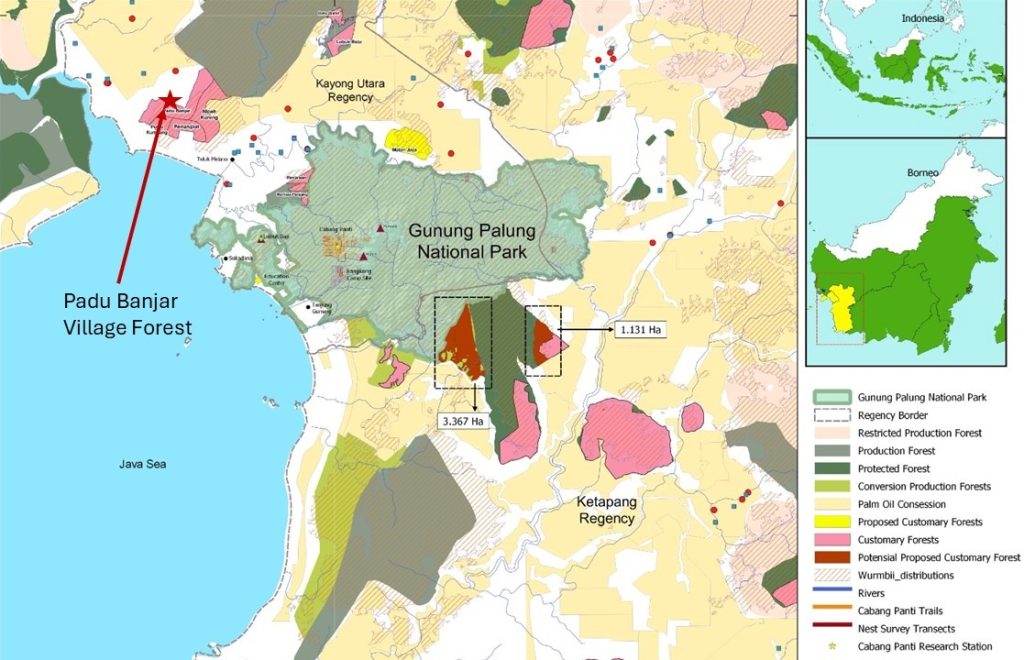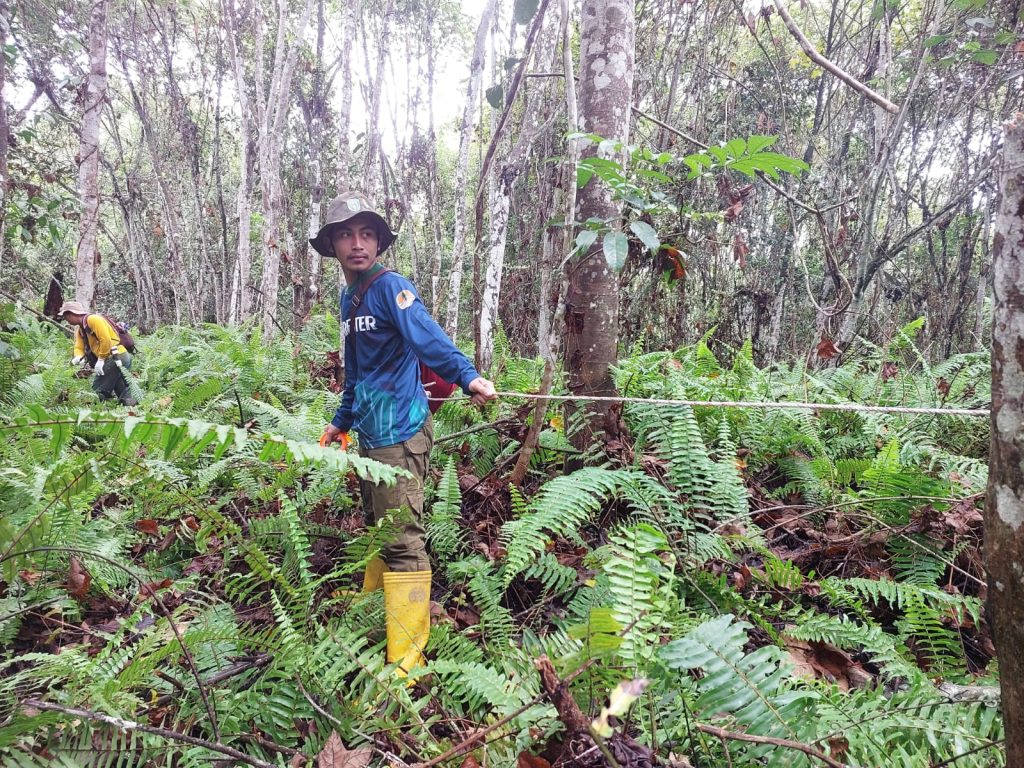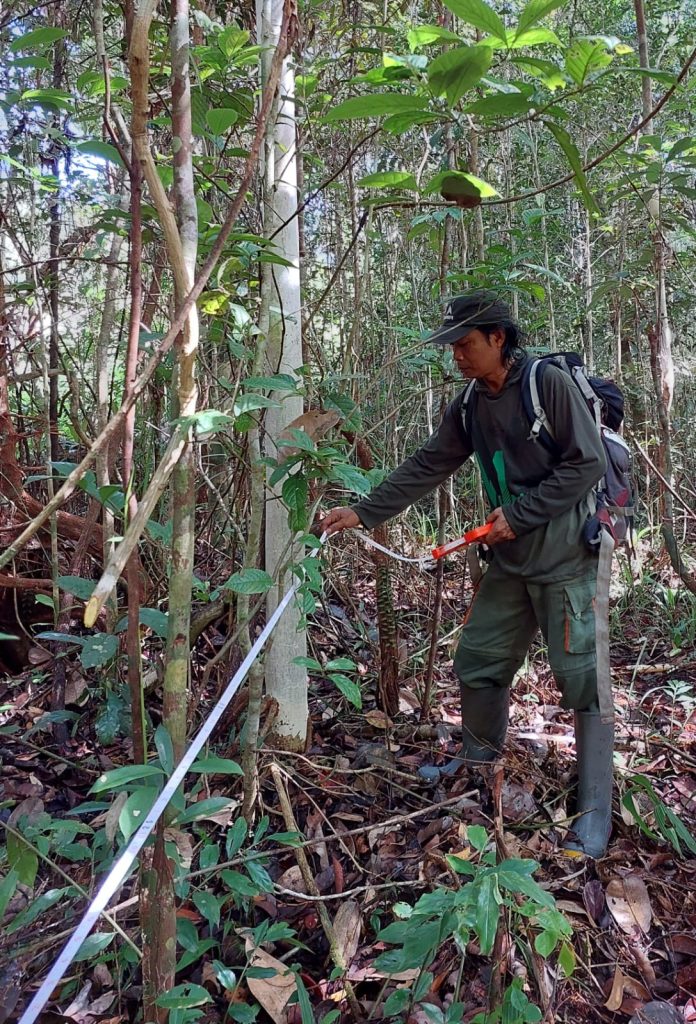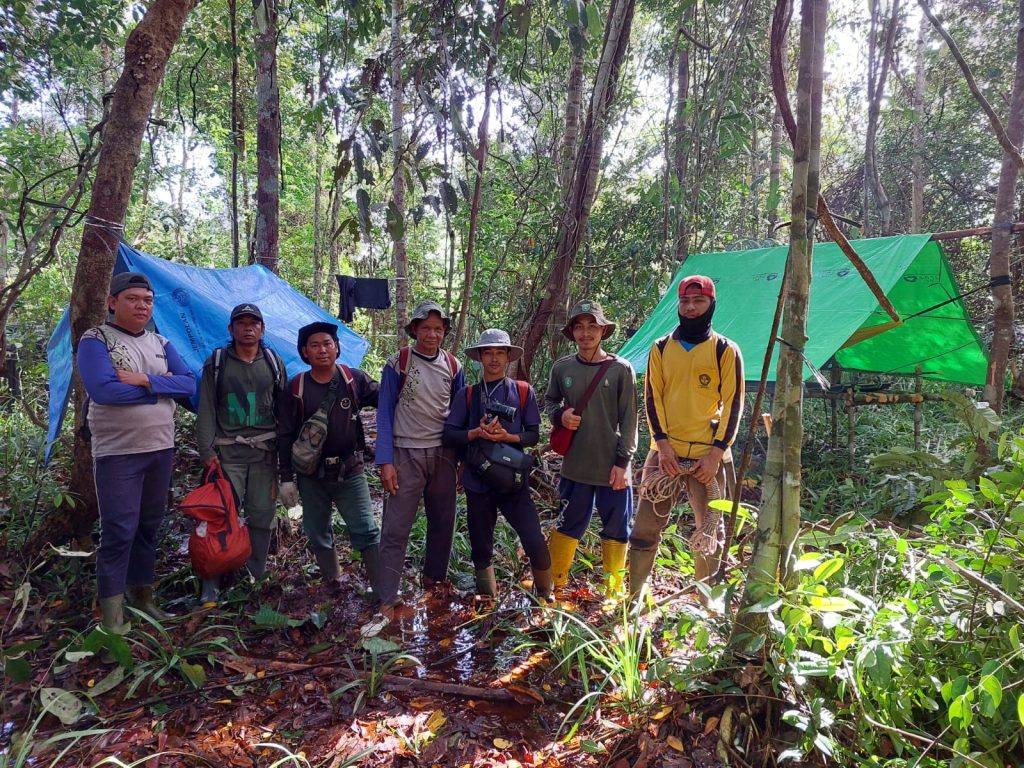By Edi Rahman, Field Director
From 2014 to the present, Yayasan Palung has assisted multiple villages in managing their Village Forests. These are areas that villagers have traditionally tended to in various ways that they now have legal title to sustainably manage and utilize. We work together with each Village Forest Management Board (LPHD) to carry out a range of monitoring and sustainability activities both within Village Forests and in community areas outside their boundaries.
One of the activities that is routinely carried out with LPHD is the annual biodiversity survey in the Village Forest area. These surveys began in 2016 and this year we started the rounds in April in the Padu Banjar Village Forest. The surveys will continue so that by the end of the year, we have surveyed the biodiversity present in six Village Forests. There are several objectives for these surveys, including obtaining up-to-date information on the population of orangutans found in these areas, the quality of orangutan habitat by identifying and quantifying tree species that are a source of food for orangutans (and thus, are plant species that have high conservation value), and updating data on the diversity of other wildlife species, especially from mammal and bird taxa. During these surveys we also identify any threats to wildlife and their habitat and use these data to inform Village Forest management plans.
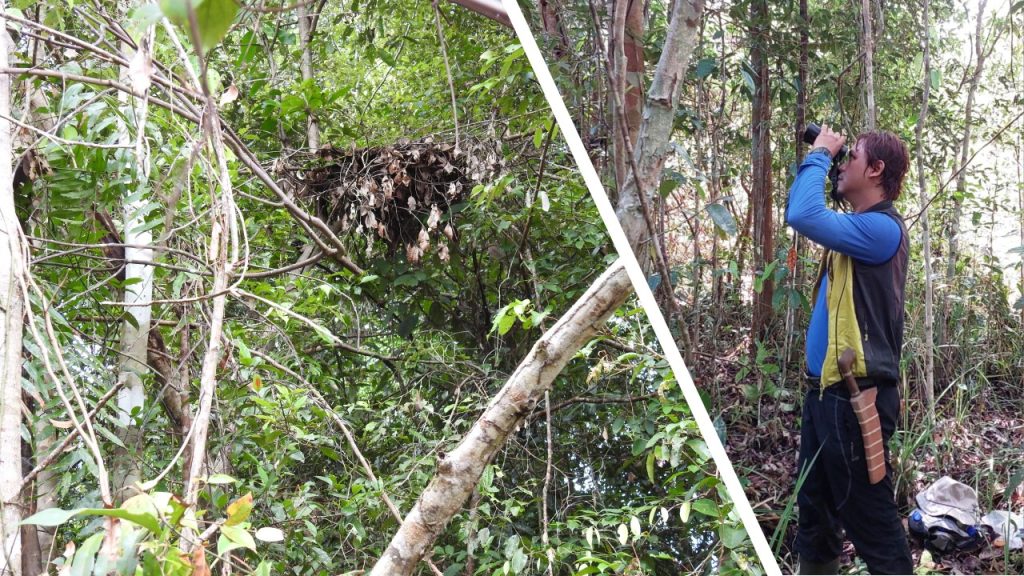
We know from previous surveys that the Village Forest in Padu Banjar, part of the Sungai Paduan Peat Protection Forest area, is a peat swamp forest and a comfortable place for various protected animals to live, including orangutans and numerous other species. We have found evidence of orangutans, gibbons, deer, several squirrel species, bearded pigs, and more. As with all our biodiversity surveys, we work together with the Village Forest Management Board, made up of members of the Padu Banjar community. It is the Management Board that has management rights to the Village Forest, and we help to build their capacity to monitor and sustainably utilize the forest for themselves and their village. This investment and training will give these management boards the ability to independently identify nests, identify orangutan food, use the technological tools, and troubleshoot as challenges are encountered. In addition to our own team members and the LPHD, we also involve members of the Kayong Forest Management Unit (KPH) Brigade in survey activities.
Within the six Village Forests that we target for biodiversity surveys, there are 16 transects that we monitor, including 12 in the Peat Protection Forest (HLG) landscape of Sungai Paduan, which is made up of Village Forests in Padu Banjar, Pulau Kumbang, Pemangkat, and Nipah Kuning villages. There are another 4 transects in the Sungai Purang Production Forest (HP) landscape, and this area consists of Penjalaan and Rantau Panjang Village Forests.
Starting this year, we have added an additional protocol to our annual biodiversity surveys – thermal drone orangutan surveys. There are several objectives of data collection using thermal drones including rapid assessment of orangutan populations in Village Forests and assessing the temperature of the forest canopy as a measure of degradation and risk of forest and land fires. These rapid assessments with the thermal drone are highly dependent on weather conditions, whether it is sunny, overcast, or raining. But in general, thermal drone flights are carried out in the morning when the sun has only just started to rise, and the heat has not yet penetrated the forest canopy. When the weather is sunny, the suitable time to fly the drone is between 5:00 and 6:30 AM and if the weather is cloudy, the suitable timeframe is extended from 5:00 to 7:30 AM or beyond if the sunlight has not yet penetrated the clouds. After completing 4 transects in Padu Banjar Village Forest in April, we carried out the May survey in Pulau Kumbang Village Forest covering 2 transects and then Pemangkat Village Forest which also has 2 transects. We seem to discover additional species present with each survey and are heartened by the breadth of the diversity that call the Village Forests home. It is clear these areas are very worth protecting.
